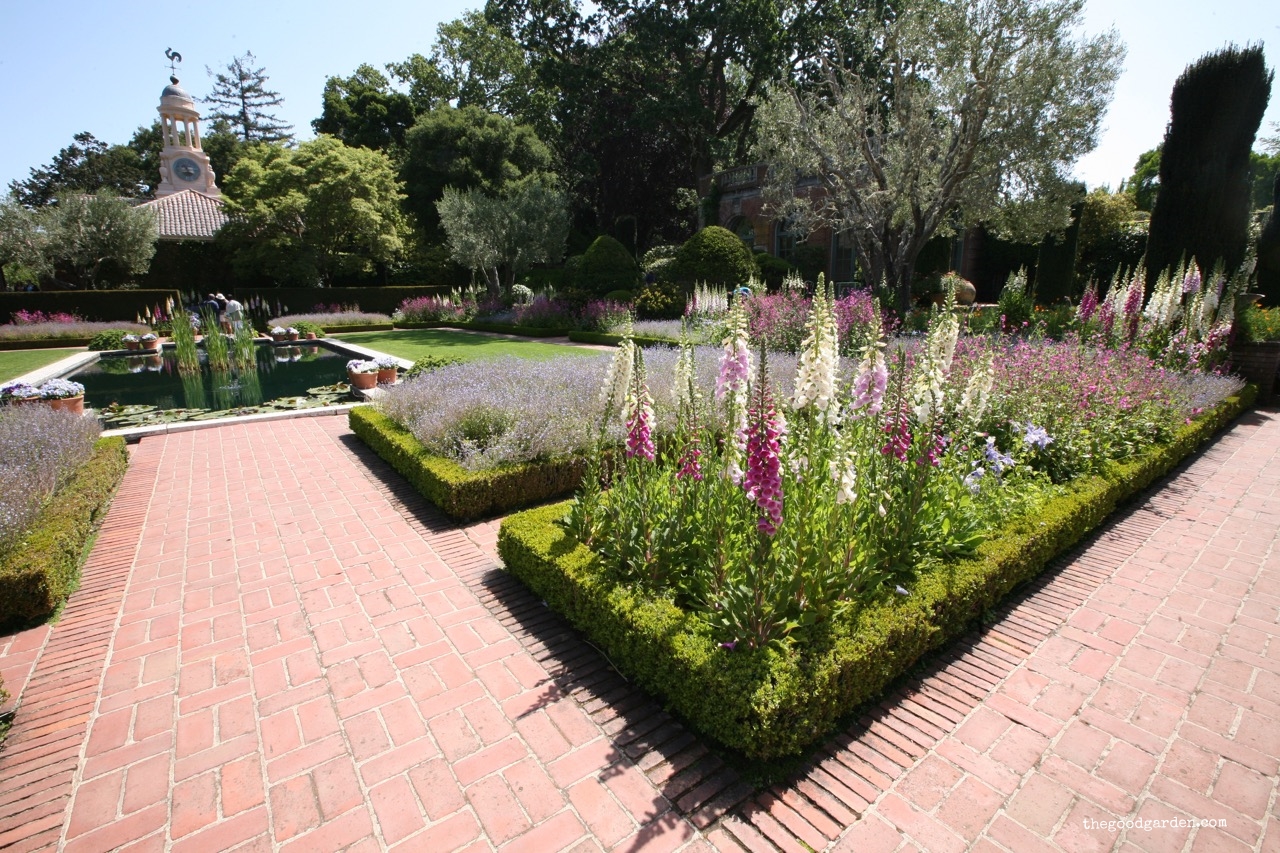“Fight for a just cause; Love your fellow man; Live a good life” was the favorite credo of the creators of this quintessentially American gilded age country house and garden. The first 2 letters of each phrase, FI-LO-LI, form the name of this special place.
It also is an apt description for the garden today. It is intentional, welcoming, and celebratory.
Filoli was built in 1915 by San Franciscan’s William Bourn and Agnes Moody Bourn. Their wealth came from gold mining, water, and other investments. The great earthquake and fire of 1906 in San Francisco left half of the city homeless. So like many of the well-to-do, the Bourns sought to build a home on safer ground outside of the city. William and Agnes chose the idyllic southern end of Crystal Springs Lake to build Filoli.
Landscape architect Bruce Porter planned the garden and horticulturalist Bella Worn chose the plants. Porter was a talented artist from San Francisco whose ideas were informed by his studies in Paris, London, and Venice. Worn was an accomplished plants person who also brought inspiration from her travels through Europe. Learn more about Bella Worn in this wonderful Pacific Horticulture piece.
Bella Worn chose the plants for the garden and worked with both sets of owners. Source Pacific Horticulturalist.
In the 1930’s, William Roth and Lurline Matson Roth purchased Filoli from the Bourn estate and continued to work with Bella Worn to maintain the integrity of the garden. And in 1975, Lurline Roth donated the property to the National Trust for Historic Preservation. (Thank you Lurline!)
Portrait of Lurline Matson Roth in the garden. Lurline donated the property to the National Trust so that it could be enjoyed by us forever.
In 1977 Lurline Roth explained her relationship with Bella Worn: “Originally, Miss Worn did all the planting for the garden, under the direction of Bruce Porter, and continued until she became too busy with other work, and then she resigned. Later, Bella was able to come back and take over again, [continuing] until she died. Under her guidance, I learned so much, as she made me feel that the garden was mine, which might be difficult for one in a supervisory position. We put in the swimming pool area and moved the yew allée back of the swimming pool from up near the orchard. We also did all the planting behind the pool.”
The Filoli garden is comprised of a series of distinct rooms in the arts and crafts style popular at the time. But the heart of the garden lies in the central Sunken Garden, the first garden room that you see. It is set a few steps down so that at first you get to see over it to more distant parts of the garden: the meadow, pool, and tea house. Only a few openings provide access to the Sunken Garden. But once you are inside, the larger garden context disappears and clipped yew hedges provide the backdrop for seasonal flowering plants framed in box. Rectangular pools reflect the sky and provide space for water plants. The garden is meant to be seen from the tea house, or for strolling.
On the day that I visited, the Sunken Garden was full of blooming foxgloves, a biennial normally seen at the edges of woodlands. They were at the peak of perfection. As is my preference, I arrived at the garden early when there are usually fewer people. I expected to be back in San Francisco by early afternoon. To my great surprise, I ended up closing the place!
The garden gate. The Sunken Garden can be seen in the distance.
What makes Filoli unique is that its 19 full time professional staff are complemented by over 1100 volunteers that work on 18 different committees; plus an internationally recognized internship and apprentice program. During my visit I ran into several volunteers who also act as ambassadors for the property: they are welcoming and happy to explain how the garden works. The result of their collective effort is that the gardens look at least as good as they might have in 1920, perhaps better. Filoli is one of the best maintained gardens I have ever seen anywhere in the world. The flower beds are turned over multiple times each season so there is always something new to see.
Filoli allows us to see what’s possible; and it gives us a day of pure garden pleasure. At only a 45 minute drive south of San Francisco, this garden is well worth a day trip out of the city. Plan your visit at Filoli.org.
The creators of Filoli lived by “Fight for a just cause; Love your fellow man; Live a good life.” What's your credo?











